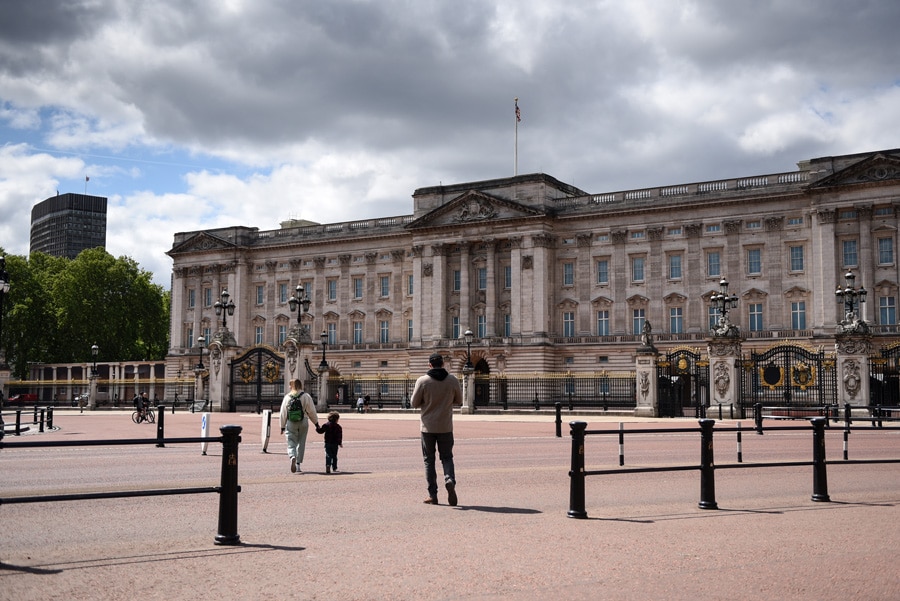
Prince Philip's death adds new urgency to UK monarchy's transition plans
While the queen has gone back to work since Philip's death, she is never going to return to the hectic schedule of meetings, receptions and garden parties that she plowed through for decades
 A handful of tourists outside Buckingham Palace in London in the early months of the pandemic, May 13, 2020. The passing of Prince Philip has given new urgency to a transition already underway in the House of Windsor, with Queen Elizabeth II's reign in its twilight and Prince Charles moving to streamline the royal family. (Mary Turner/The New York Times).
A handful of tourists outside Buckingham Palace in London in the early months of the pandemic, May 13, 2020. The passing of Prince Philip has given new urgency to a transition already underway in the House of Windsor, with Queen Elizabeth II's reign in its twilight and Prince Charles moving to streamline the royal family. (Mary Turner/The New York Times).
Queen Elizabeth II turned 95 last week, four days after burying her husband, Prince Philip, and with him the partnership that guided Britain’s royal family for nearly 70 years. Now, as the queen faces the future alone, her son and heir, Prince Charles, is reshaping the family to carry on after her.
Philip’s death has given new urgency to a transition already underway in the House of Windsor. With the queen’s reign in its twilight, Charles has moved to streamline the royal family and reallocate its duties — a downsizing forced by the loss of stalwart figures like Philip, as well as by the rancorous departure of Prince Harry and his wife, Meghan, and the messy internal exile of Prince Andrew.
Buckingham Palace is conducting an after-action report on Philip’s funeral ceremony, people with knowledge of the palace said, applying lessons from it to Operation London Bridge, the long-in-the-works, minute-by-minute blueprint for what will transpire in the days and weeks after the queen dies.
By all accounts, Elizabeth is in good health, bothered only by stiffness in her knees, which makes it hard for her to climb stairs. Royal watchers point out that her mother lived until 101. Buckingham Palace is busy planning her platinum jubilee, a four-day celebration in June 2022 to mark the 70 years since her accession to the throne.
©2019 New York Times News Service




